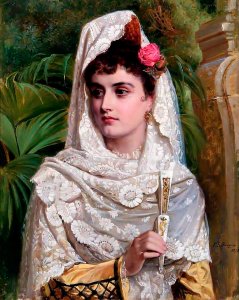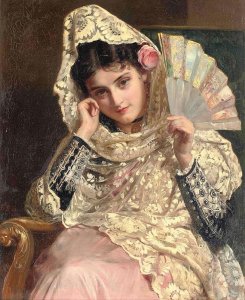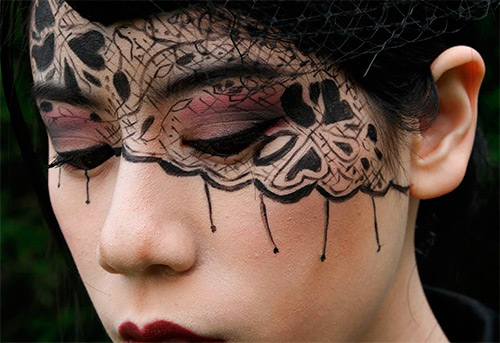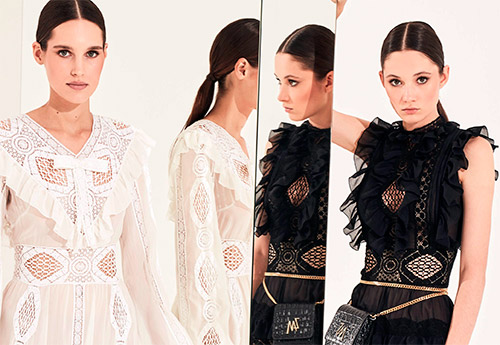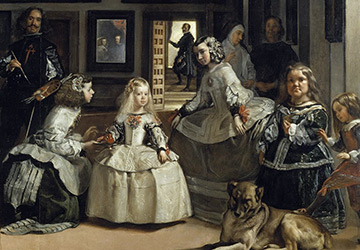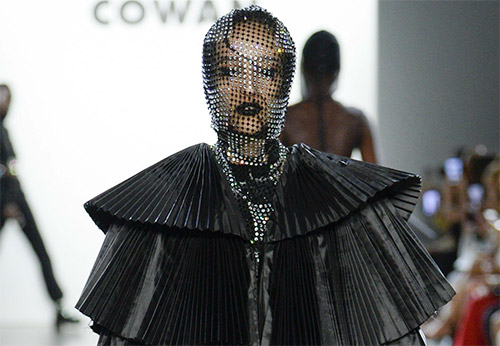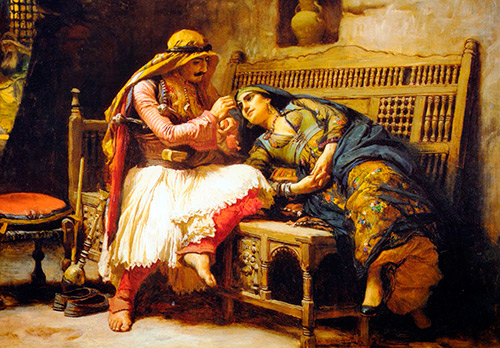Fashion history
Lace mantilla for a sophisticated beauty
The national women's costume of Spain is distinguished by a wealth of accessories, and among them the obligatory items for decorating an image are a lace mantilla and a paintet - a comb supporting the mantilla.
Mantilla (mantilla, from the Latin mantellum - cover). This item is known in fashion from the women's national costume of Spain. Mantilla is a silk or lace scarf that was usually worn over the head over a high crest (peinette).
The mantilla, draped over the head and shoulders of the lady, enveloped her figure, and sometimes fell almost to the floor. She gave the female image mystery and inaccessibility, posture - majesty, and the look of the beauty's black eyes - a mystery. Years and centuries passed, the lace veil changed ...
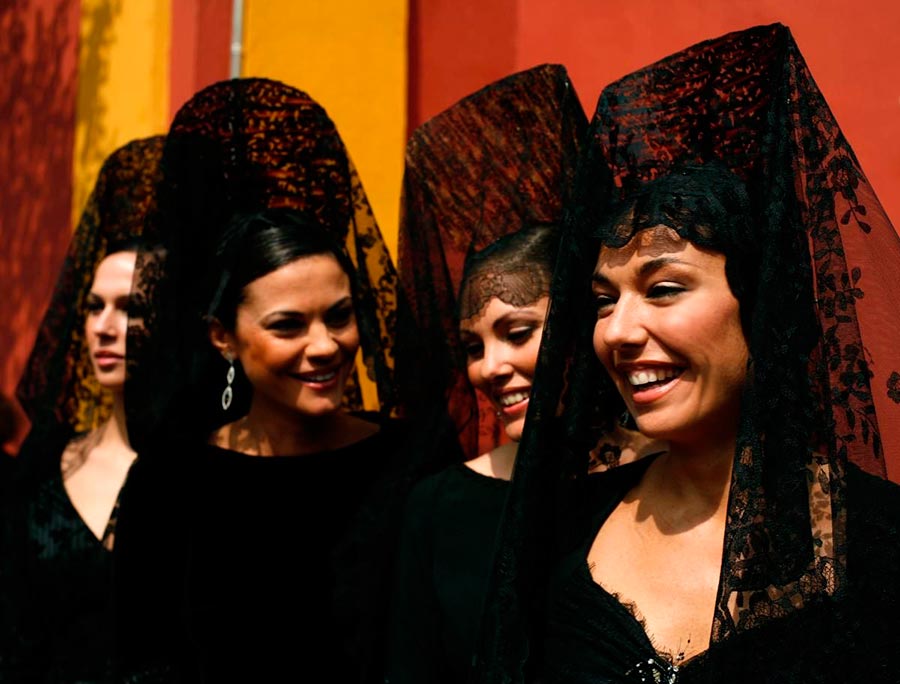
It is today that I would like to recall this decoration that has come down to us from the depths of centuries. Many fashion designers are trying to revive the interest of modern women by offering them different types of veils. Mantilla is still an attribute of aristocracy and part of diplomatic etiquette.
How the cape was worn 100 years ago. 1922 video
When did the mantilla appear in history?
There are several versions. According to one of them, the women of Spain began to wear it in the 8th century, when the Arabs conquered Spain. True, at this moment it was made of dense fabric and looked more like chador... Perhaps the role of the mantilla was the same as that of the eastern veil - to hide the woman's face from prying eyes.
According to another version, in the 17th century, the mantilla was worn by ladies of dubious reputation, for whom it served as a sign of distinction from noble seniors. However, the exquisite cape soon fell in love with many women of that time. She was especially popular in the Iberian Peninsula and Latin America.
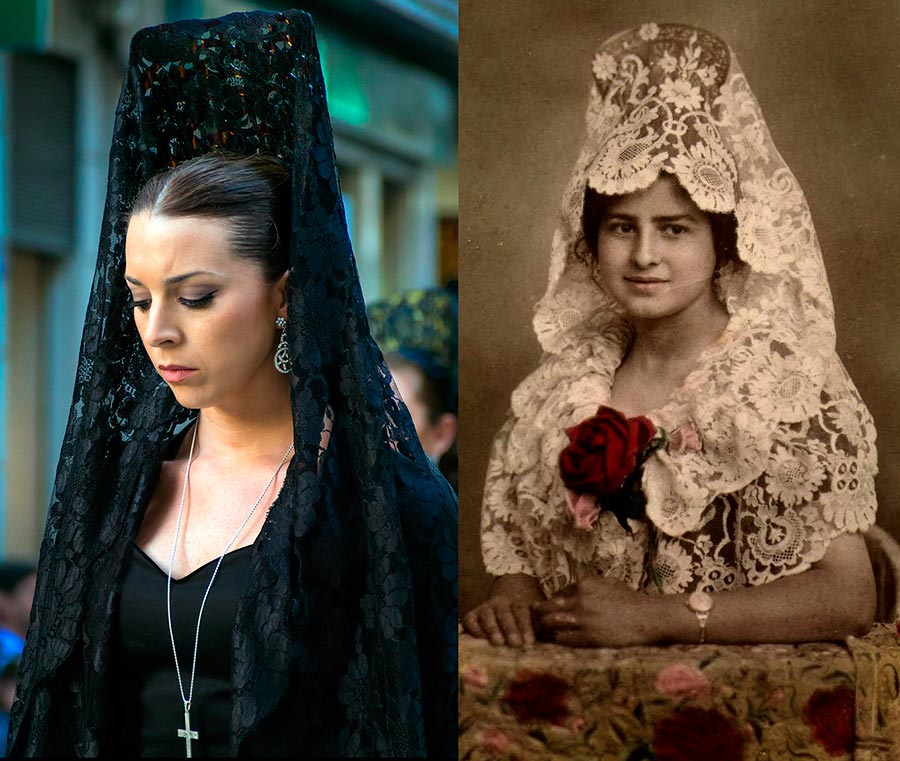
Since the 16th century, with the rise of Spain, many began to dress in the Spanish way, and in the second half of the 16th century, the whole of Europe wore Spanish clothes with some modifications. The mantilla was used both as a decoration and as a bedspread. At first, it was simply thrown over the head and shoulders, and a little later began to be fixed on the head with a comb.
Lace mantilla
The popularity of the accessory increased in the 17th century, when lace mantilla appeared. They can be seen in the portraits of women by Velazquez. It was at this time that mantilla became an important part of the wardrobe of court ladies and women of the aristocratic circle.
However, in the 19th century, the Mantilla was expected to be even more successful. Queen Isabella II of Spain (1833-1868) was very fond of the mantilla and often wore it. The ladies of the court quickly reacted to the fashion accessory, and the mantilla entered the traditional costume of Spanish women. Many artists left female portraits in mantilla to descendants. In magnificent lace capes we can see women of all classes in the portraits of the 18th - 19th centuries. Spanish artist Francisco Goya.
INCREASING ON A CLICK!
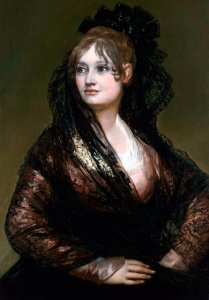
Francisco de Goya. Portrait of Donna Isabel de Porcel
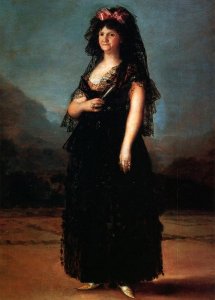
Francisco de Goya. "Queen Maria Louise of Parma"
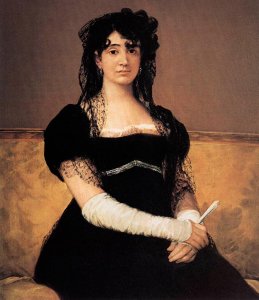
Francisco de Goya. Portrait of Dona Antonia Zarate
It was at this time that the fashion for these capes spread in European countries. They fell in love with the luxurious accessory in Russia as well, paintings by famous artists tell about it.
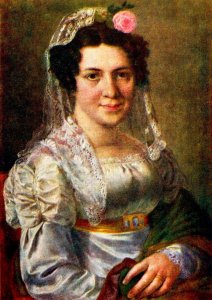
V. Tropinin. Portrait of E.D. Shchepkina
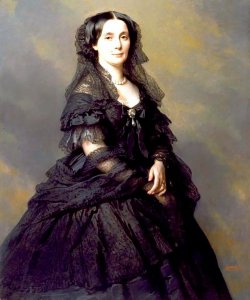
Winterhalter F.K. Portrait of Elena Pavlovna Bibikova, Princess Kochubey
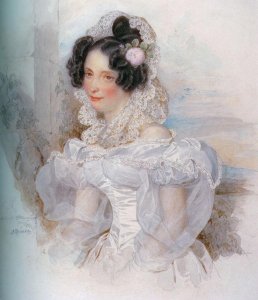
Alexander Bryullov. Ekaterina Bakunina, 1834
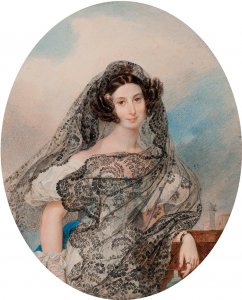
Karl Bryullov. Portrait of Giovanina Pacini, 1831
Among all the great artists, I would like to mention the English artist John Bagnold Burgess (1829-1897), for whom Spain became the main theme in his work. Having visited Spain for the first time in 1858, he constantly returned to it, visiting it annually for 30 years.He devoted his life to studying the country, its way of life and national character, embodying Spanish and Gypsy themes on his canvases. In these paintings, we can often see women with a high crest, wearing a black lace mantilla that sets off the marble of the body.
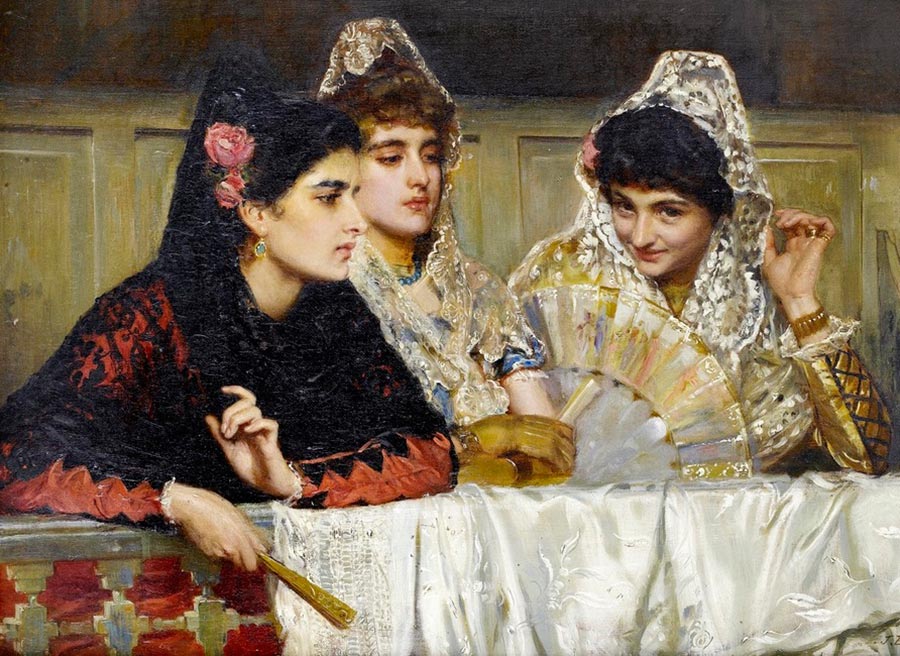
John Bagnold Burgess. Spanish women
The use of the mantilla in Spain gradually declined after the overthrow of Isabella II. But this was not due to a change in power in Spain, but to a change in fashion and style of clothing at that time.
A repeated surge in popularity occurred in the middle of the 19th century, when Chantilly lace was learned to be made by machine.
"The light mantilla trembles,
She is divinely beautiful ... "
She is divinely beautiful ... "
The most delicate lace was named after the small French town of Chantilly, where these laces were woven. Affordable mantilla could now be made in any size.
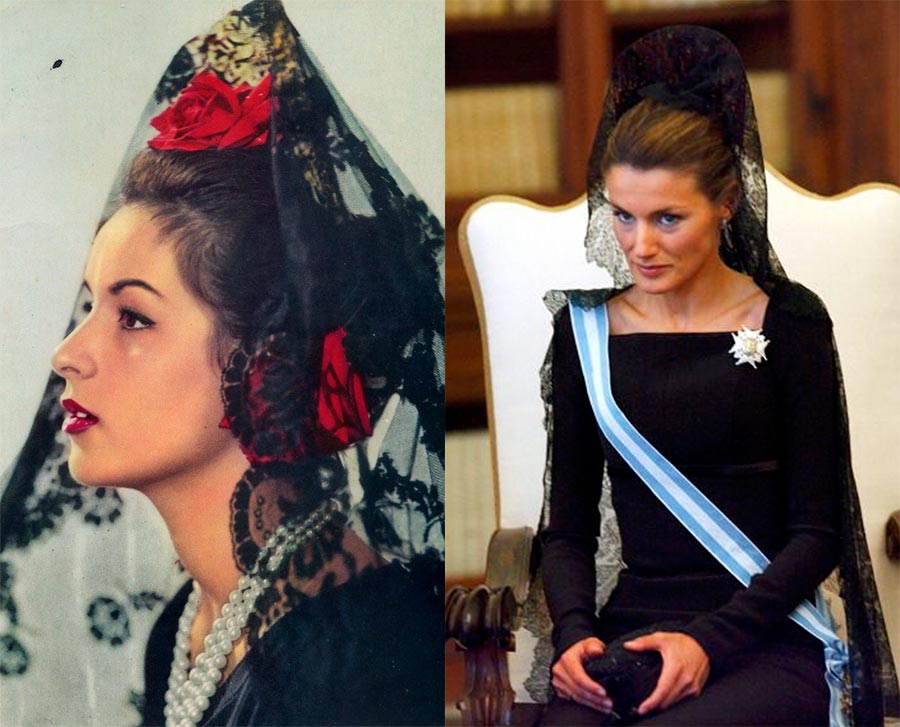
As you know, there are many varieties of lace-making, but in the manufacture of veils and capes, Blond and Chantilly were most often used. These laces are originally from France.
Blond lace got its name from the golden shade of silk threads that were used in weaving.
“... The golden moon has risen,
Hush ... chu ... guitars ringing ...
Here is a young Spanish woman
Leaned on the balcony ... "
Hush ... chu ... guitars ringing ...
Here is a young Spanish woman
Leaned on the balcony ... "
Spanish beauties gladly adorned themselves with mantilla made of such lace. Large patterns were located on the finest curly mesh. And the pattern itself covered the mesh with a gilded pattern of silk threads.
Blondes have a lot in common with Chantilly lace. But the latter are more subtle and refined. The main distinguishing feature is that Chantilly has a more transparent pattern, since it is made with a net, and the blonde's flowers are denser, and the motives of Chantilly are more varied - in addition to floral drawings, there are figurines of birds, angels, and sometimes whole landscapes.
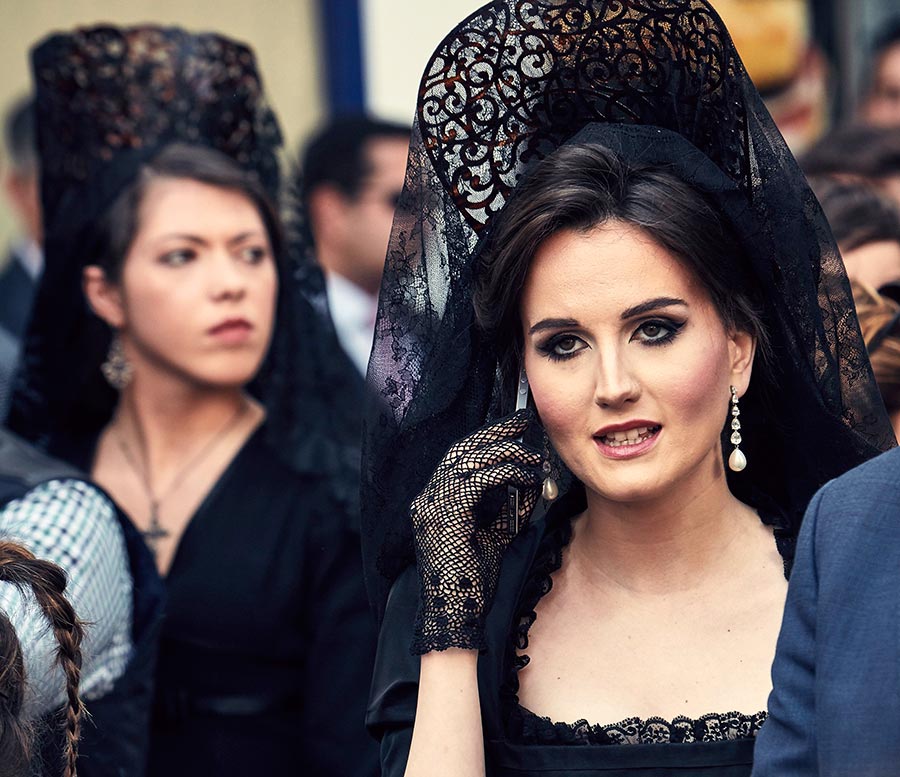
At the end of the 19th - beginning of the 20th century, the mantilla no longer enjoyed such success. Women covered their heads going only to church, most of them wore a small mantilla. Long capes began to be used only for certain events, for example, during Holy Week (Holy Week) ...
Today, the wearing of the mantilla in Spain has survived on national and religious holidays, it is also worn during a bullfight or for the wedding... As an accessory to a diplomatic suit, for example, for an audience with the Pope, the mantilla is worn not only by the Spanish Queen and Infants, but also by the wives of presidents of other countries.
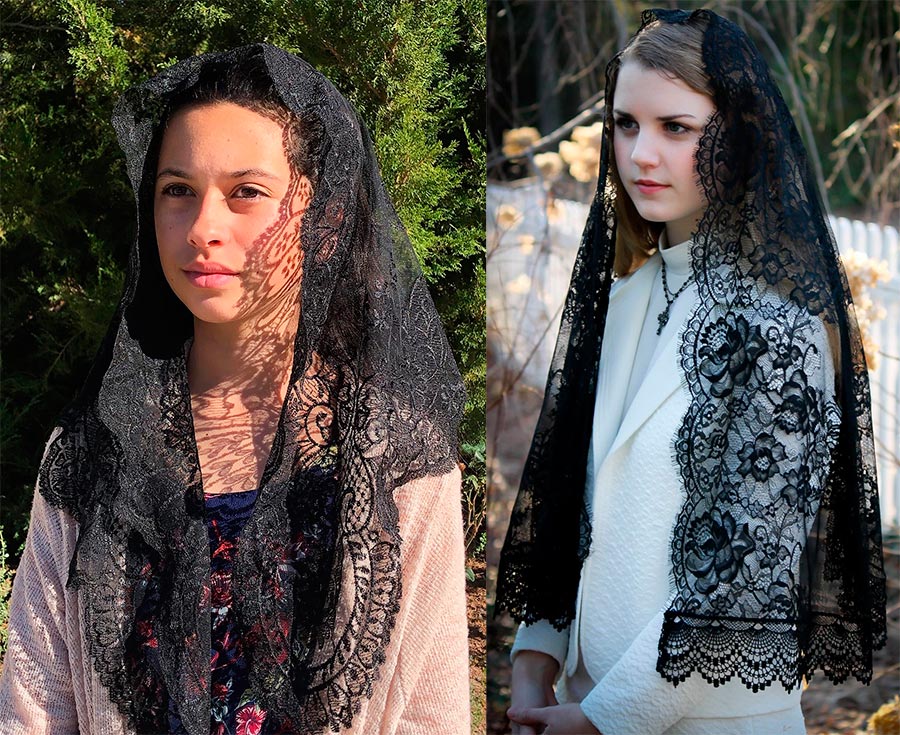
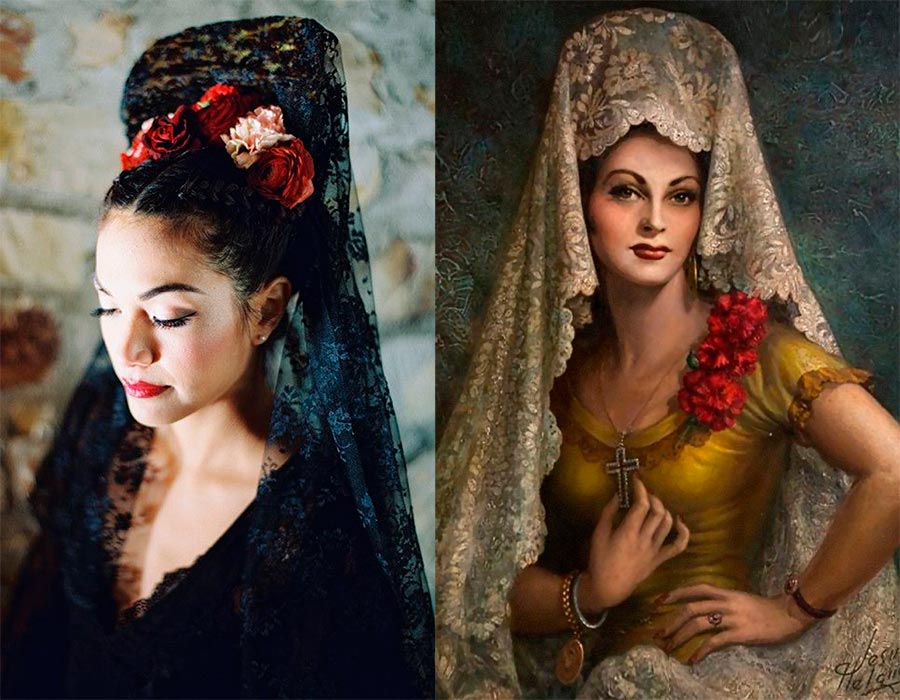
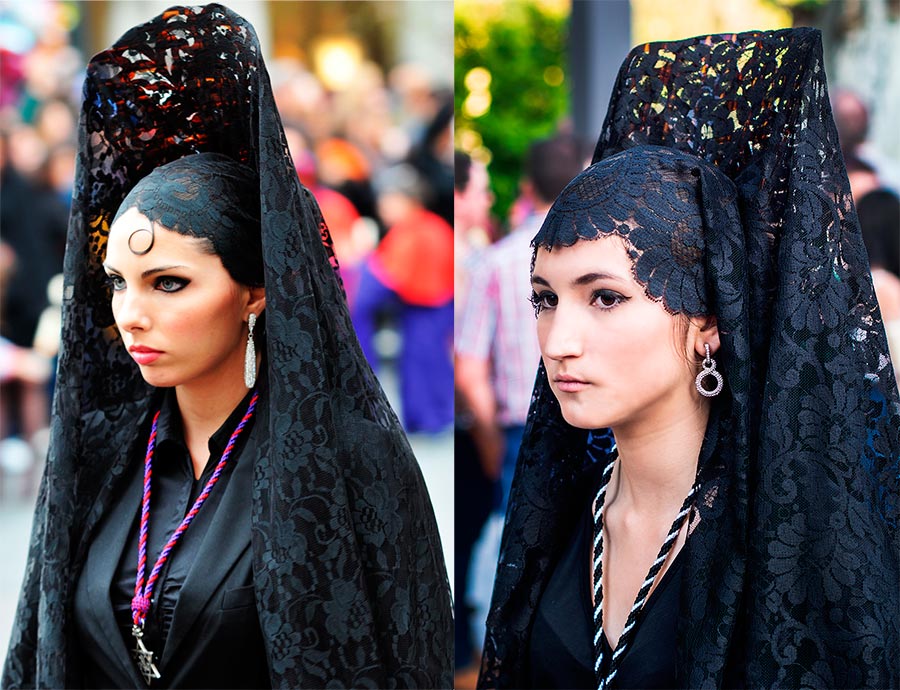
Comments and Reviews
Add a comment
Rating news
Shades of clothing that make women look younger
What shades of hair make women younger: rules and photos
Funny wedding dresses - photos and ideas
12 most expensive down jackets for the winter
How to look 25 at 40: tips from supermodels
Beautiful schoolgirls
Anti-aging haircuts and hairstyles for women
Fashionable skirts for autumn and winter
Fashionable women's trousers for the cold season
Fashionable and stylish sandals for summer 2024
Spring-summer 2024
 Fashionable dresses and tops with thin spaghetti straps
Fashionable dresses and tops with thin spaghetti straps
 Bandana tops: how to wear stylishly and beautifully
Bandana tops: how to wear stylishly and beautifully
 How to put together the perfect men's wardrobe for the summer
How to put together the perfect men's wardrobe for the summer
 Trendy shorts for spring-summer 2024
Trendy shorts for spring-summer 2024
 Fashionable skirts for spring-summer 2024: a guide to online shopping
Fashionable skirts for spring-summer 2024: a guide to online shopping
 The most fashionable dresses spring-summer 2024: styles and colors
The most fashionable dresses spring-summer 2024: styles and colors
 Fashionable total look 2024: image ideas and trends
Fashionable total look 2024: image ideas and trends
